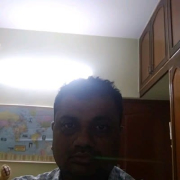SonarQube Server enhances code quality and security via static code analysis. It detects vulnerabilities, improves standards, and reduces technical debt, integrating into CI/CD pipelines.



| Product | Market Share (%) |
|---|---|
| SonarQube Server (formerly SonarQube) | 20.4% |
| Checkmarx One | 10.4% |
| Veracode | 7.7% |
| Other | 61.5% |
| Type | Title | Date | |
|---|---|---|---|
| Category | Application Security Tools | Oct 29, 2025 | Download |
| Product | Reviews, tips, and advice from real users | Oct 29, 2025 | Download |
| Comparison | SonarQube Server (formerly SonarQube) vs Veracode | Oct 29, 2025 | Download |
| Comparison | SonarQube Server (formerly SonarQube) vs Checkmarx One | Oct 29, 2025 | Download |
| Comparison | SonarQube Server (formerly SonarQube) vs GitHub Advanced Security | Oct 29, 2025 | Download |
| Title | Rating | Mindshare | Recommending | |
|---|---|---|---|---|
| Snyk | 4.0 | 6.5% | 100% | 49 interviewsAdd to research |
| GitLab | 4.2 | 2.5% | 97% | 87 interviewsAdd to research |
| Company Size | Count |
|---|---|
| Small Business | 27 |
| Midsize Enterprise | 17 |
| Large Enterprise | 56 |
| Company Size | Count |
|---|---|
| Small Business | 1482 |
| Midsize Enterprise | 997 |
| Large Enterprise | 4861 |
SonarQube Server is a comprehensive tool for enhancing code quality and security. It offers static code analysis to identify vulnerabilities, improve coding standards, and reduce technical debt. By integrating into CI/CD pipelines, it provides automated checks for adherence to best practices. Organizations use it for code inspection, security testing, and compliance, ensuring development environments with better maintainability and fewer issues.
What are the key features of SonarQube Server?Many industries implement SonarQube Server to uphold coding standards, maintain security protocols, and streamline their software development lifecycle. In sectors like finance and healthcare, adhering to regulations and ensuring reliable software is critical, making SonarQube Server invaluable. It is often integrated into CI/CD pipelines, ensuring that code changes meet set standards before deployment. This approach enhances productivity and maintains compliance with industry-specific requirements.
SonarQube Server (formerly SonarQube) was previously known as Sonar.
| Author info | Rating | Review Summary |
|---|---|---|
| Sr Software Engineering Supervisor at Mozarc Medical | 4.5 | I use SonarQube Server for static code analysis to detect build vulnerabilities, valuing its rule control despite ongoing scanning issues. Transitioning from Coverity, I see ROI due to its FDA approval, essential for our reports. |
| Head of Software Engineering at ronaldmariah@gmail.com | 4.5 | I use SonarQube Server for static code analysis to enhance code quality and manage technical debt. Its valuable features include code suggestions and customizable metric tracking, though it could improve by integrating AI. It replaced AppScan, offering better functionality. |
| IT Officer (Solution Architect) at World Bank | 4.0 | I've used SonarQube Server for years to monitor code quality through static analysis and test coverage, finding it effective overall, though reporting can be complex and improvements in AI and IDE integration would enhance the experience. |
| Distinguish Engineer at Gtmhub | 4.5 | I use SonarQube Server for static code analysis in our Jenkins CI builds, primarily on Golang projects. It effectively identifies code issues and improvements. Although satisfied, potential enhancements could include bill of materials functionality. We switched from Snyk for cost efficiency. |
| Senior Manager Product Engineering at GlobalLogic | 4.5 | My company uses SonarQube for static code analysis and unit test coverage. While it provides comprehensive insights, it can sometimes trigger false alarms. Its integration helps identify bugs in the testing phase, though improvements with AI could be beneficial. |
| Consultant at Green method | 4.0 | I use SonarQube for static code analysis due to its structured and native integration, especially compared to tools like GitHub Advanced Security. While its flaw detection is effective, enhancing the analytics engine would significantly improve analysis and reporting capabilities. |
| Tools manager at Harmony international | 4.0 | At our company, we use SonarQube to scan Dot.Net and Java sources, supporting various languages and offering an open-source model. However, improvements are needed for C/C++ compatibility and potential AI integration like GitHub Copilot. |
| Senior Software Architect at a tech vendor with 10,001+ employees | 4.0 | I use SonarQube mainly to analyze code quality, focusing on bugs and vulnerabilities. Its comprehensive analysis is valuable, though improvements like inter-procedural analysis and AI suggestions would enhance it. Coverity offers better vendor support and advanced features. |